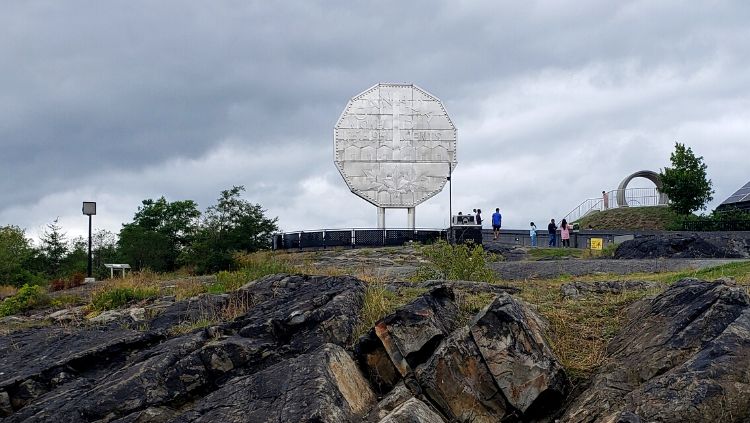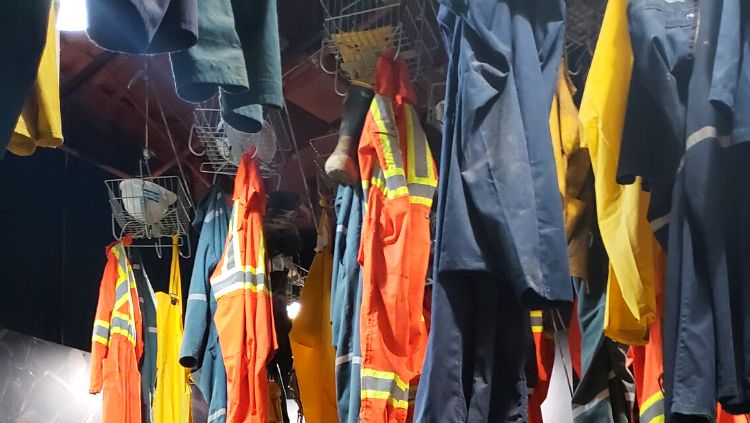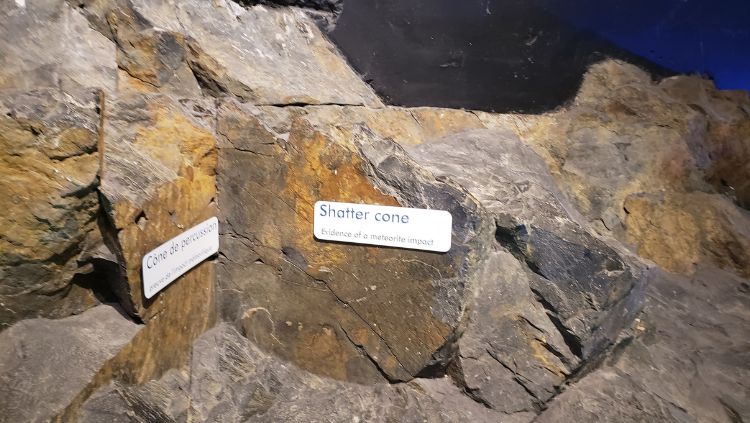
In Sudbury, I came face to face with the impact consumer demand has on our planet and efforts to meet those demands while minimizing the cost to the environment. Sudbury is an exciting travel destination for those interested in earth sciences.
The city is built on rock and survives on mining. The primary mineral extracted is nickel which was discovered there in the 1880s. For 100 years, the industry ate up the landscape with little regard for the environment. But, in 1978, the City of Greater Sudbury began, and continues, a Regreening Program that has enjoyed international recognition for its methodologies and achievements.
They began with a focus on rehabilitating Sudbury’s landscape and watersheds. Reducing air pollution was on their radar as well. The landscape has been transformed from barren rock to greenery. Lakes are now swimmable and the air far more breathable.
Last month, Jane Goodall, internationally renowned scientist and environmentalist, visited to plant the 10 millionth tree in the city as part of their re-greening effort. She even lent her name to the Jane Goodall Reclamation Trail which runs through a site that had been bare of vegetation in the 70s.
Yes, that's right: bare of vegetation. There was a lot of work to do. The success of the efforts is evident but the work continues.
Concern for the environment seems ingrained in the city’s psyche. As such, it seems only natural that Sudbury would become a popular destination for earth science discovery and education and that these two significant centers would open there: Science North and Dynamic Earth.

Dynamic Earth Is a Fantastic Visitor Attraction
Before visiting Sudbury, I had not been to a science center for many, many years. It was actually my lowest priority when I considered all the things to do in the city. But, I was surprised. After visiting Dynamic Earth, I was eager to see Science North as well.
Dynamic Earth is located beside the Big Nickel. It is part of Science North (read below) and has plenty of scientists, called “blue coats”, to answer questions and be your guide.
The exhibit starts with a look at the regreening of Sudbury. Using binoculars, you look through a window to see a green mountain ridge with just the end showing the black rock that was there before the regreening project. Displays go into more detail about the process over the 40+ years.
The visit continues with a variety of interactive exhibits including an explanation of the meteor that landed in the area creating the mineral rich basin and the reason that Sudbury is one of the largest nickel sources in the world. There's also a mineral exchange where people can bring in mineral finds, gain points and then spend the points to acquire minerals they don't have. When I was there, the special exhibit looked at mining technology at the forefront of safety.
A big attraction at Dynamic Earth is the mine tour. It costs a mere $5 more over your entrance fee. The tour lasts 1 hour 15 minutes and takes you down 7 stories into the earth and then through 100 years of mining history. If you're looking for a destination to satisfy your earth science interests, this is it!
You enter the mine tour at a room called The Dry, a replica of the room where mining gear is hung to dry after a day's work. From there, you take the elevator down and enter the damp, cool mine. Water seeps from the rocks. Before leaving the shaft into the adit (horizontal tunnel) you collect a hard hat. Then on to learn about the history of mining in the area. The tour is wheelchair accessible.
Fun fact: according to our guide, if you connected all the tunnels in Sudbury in a westerly direction, you'd make it to Vancouver!





Science North Focuses on Earth Sciences
The Science North complex includes an IMAX theater, planetarium, and the science center and I used the day to take in all three.
After watching Dinosaurs of Antarctica at the IMAX, I went to the planetarium and learned the basics of our solar system that had been long forgotten. I remember poring over the solar system part of encyclopedias as a kid, but, I have to admit, I had forgotten most of it. The Planetarium is a live show with opportunities to ask questions.
After a quick lunch at the Science North cafeteria, I headed through the cave-like tunnel into the main building. Up a series of escalators surrounding the massive skeleton of a fin whale I explored the various exhibits. I was enthralled.
I have always leaned towards the arts. I have a history degree. I'm a writer. I love the theater. I am not a natural science geek. But even I could see what a great destination Sudbury is for earth science aficionados. One visit to Dynamic Earth and Science North and my worldview has shifted. I'm reading from a wider pool of sources. A trip to these centers alone is worth the trip to Sudbury.






Considering a road trip to Sudbury? Here's what you need to know: A Road Trip Alone: Top 10 Tips to Prepare.
This trip was sponsored by Tourism Sudbury but, naturally, my description of the experience is my own. Solo Traveler maintains full editorial control of the content published on this site.
